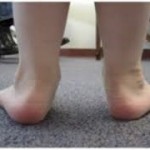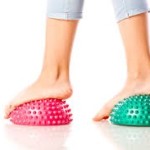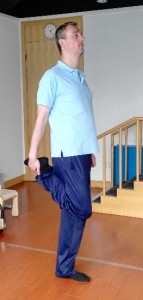 A free lecture event for parents of children with cerebral palsy was recently hosted by LIH Olivia Place’s Shenzhen and Shenzhen Angelland Disabled Children Caring Center. Parents attended with great learning enthusiasm despite the summer heat. Lead physical therapy consultant Ilija Dmitrovosk presented a three-and-a-half hour feast of rehabilitation expertise.
A free lecture event for parents of children with cerebral palsy was recently hosted by LIH Olivia Place’s Shenzhen and Shenzhen Angelland Disabled Children Caring Center. Parents attended with great learning enthusiasm despite the summer heat. Lead physical therapy consultant Ilija Dmitrovosk presented a three-and-a-half hour feast of rehabilitation expertise.
Through demonstration, Ilija vividly introduced the principles and approaches of physical therapy for treating children with cerebral palsy. Bearing in mind that each child is unique, he patiently instructed parents one by one how to properly care for their children at home.
 Ilija elaborated on the concepts of physical therapy in simple language to increase parents’ understanding. Quite a number of parents had some knowledge of physical therapy, but through this event, they learned myriad approaches of physical therapy such as 24-hour postural therapy and water therapy, to name but a few. In addition, Ilija introduced how to use the various equipment and special considerations for them. Many parents discovered that they had been using their child’s assistive equipment improperly.
Ilija elaborated on the concepts of physical therapy in simple language to increase parents’ understanding. Quite a number of parents had some knowledge of physical therapy, but through this event, they learned myriad approaches of physical therapy such as 24-hour postural therapy and water therapy, to name but a few. In addition, Ilija introduced how to use the various equipment and special considerations for them. Many parents discovered that they had been using their child’s assistive equipment improperly.
During practical training, Ilija patiently explained appropriate exercises. He noted repeatedly that parents need to help their children exercise to fulfill their potential. According to the situation of each child, parents can use common and simple equipment to help children do rehabilitation exercises properly. But these simple exercises have many points that need to be carefully considered, therefore parents need to closely pay attention to their child and actively interact with and encourage them while they exercise.

Encouraged by her mother, a little girl sitting in wheelchair began to respond actively, positions that she had been unable to do before. All the people present burst into cheers and her parents were greatly inspired.
During a break, parents said that they planned on signing up for more courses and the vivid descriptions and practical training brought benefits to them. Despite a duration of more than 3 hours, many found the event too short. After the lecture concluded, parents gathered around Ilija, continuing to search for professional instruction.
Ilija Dimitrovosk, Lead Physical Therapy Consultant at Shenzhen LIH Olivia’s Place, has 15 years of experience in physical therapy early intervention for newborns and premature infants, children’s growth and development, children’s physical therapy, and sports and rehabilitation medicine.


























